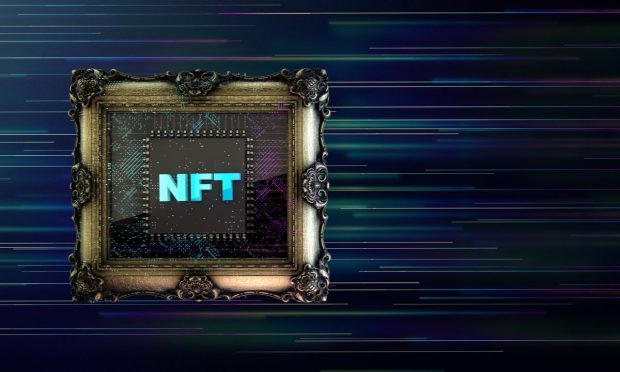2021 is the Year of the NFT and Omnichannel Auction Houses

The year was 1744. The place? London. Here, Sotheby’s had its very first auction where a few hundred rare and valuable books of Polite Literature sold for a little over 800 pounds.
Fast forward to today and auction houses like Sotheby’s and Christie’s are simply thriving. For instance, Sotheby’s just announced its highest year to date since its inception 277 years ago with over $7 billion in luxury items sold.
“There’s a reason we’ve been around for more than 275 years, and part of that is because we are always looking for the next market, the next opportunity and a new way of doing things,” said Sotheby’s regarding its recent “radical shift” in business.
Driving this historical transformation is arguably a primarily younger, super tech-familiar, very non-fungible token-interested (aka NFT) consumer group. For example, nearly 75% of customers who make a transaction via Buy Now (a part of the Sotheby’s website where you can shop by category) are brand new to Sotheby’s.
“Younger collectors are playing at a high level we’ve never seen before,” Sotheby’s said. “Luxury has become their on-ramp to collect considerably more.”
2021, the Year of the NFT
In the meantime, 2021 was the year the NFT hit the mainstream. Especially within auction houses. For instance, in 2021, both Sotheby’s and Christie’s respectively sold $65 million and $100 million NFTs. These sales made up a small portion — 5% — of total sales. For now. But this small percent is perhaps hugely telling of where auction houses may go next.
For example, auction houses are now very much looking to dive further into the NFT space. They’re doing so by getting their hands dirty on the internet. Like by making deals over social media with buyers and getting NFTs straight from the artists who designed and executed them.
What Goes Around Comes Around
Taking a step back, consider that today’s auction model stems from models of the past — ones most consumers have used before, or at least have heard of others using. Even if someone hasn’t personally gone to Sotheby’s in London just yet to, say, bid on a self-destructing Banksy, he or she has probably either used or has at least heard of eBay, Craigslist, Facebook, Poshmark, Etsy and so on.
Predicts Karen Webster, CEO of PYMNTS, auction houses like Sotheby’s are at a tipping point. “I see Sotheby’s shifting from where people once bid at auctions to where people now make online purchases on Sotheby’s website,” she said.
Consider, for example, companies like 1stDibs, an online auction marketplace that sells art, antiques and jewelry. Oh, and NFTs, too.
“Give uniquely. An NFT is an extraordinary last-minute gift that will forever ignite the imagination,” says the 1stDibs homepage at the time of this writing. Listed under live auctions are NFTs such as a $39,606.40 video of a day-glow fish called “Summoning Circle.” Mesmerizing to watch, yes. The cost of a year of tuition at some colleges, also yes.
A critical question remains, namely: So, what’s up with that, anyway? Says Webster, perhaps consumers no longer find the traditional eCommerce experience interesting or stimulating enough. Indeed, perhaps consumers now crave that same kind of dopamine hit from watching a stream of TikToks or an intense, adrenaline-filled action movie as they do when they get their credit card out. Perhaps people are looking for shopping experiences with a little more in-the-moment thrill – especially when purchasing luxury goods or something where they will be the only person to own a truly unique, one-of-a-kind item.
Webster believes one key consideration for retailers is whether consumers are suffering from the frictions, hassles, wait times, the disappointment of being out-bid at the last minute, and other pain points auctions create. Retailers can thrill consumers by making the buying experience more personalized and one-of-a-kind – something they need to act on now or miss out on forever.
The Future of Retail is About Omnipresence
Retailers should perhaps also consider the importance of omnichannel offerings, said Webster. This includes everything from online to offline, from mobile to voice and so on. Omnichannel offerings of the future will actually become part of the average consumer’s purchasing experience, Webster believes. Perhaps this means, for example, there’s an omnichannel element while a consumer is on an eCommerce site. This goes well beyond another pop-up ad. This is about making a deep connection with a consumer tied to the emotional thrill of a truly unique purchase that speaks to them and adds value and joy to their life.
Consider one company doing just this — DROPIT. For one car auction the firm ran, even those consumers who don’t win auctions still got gift certificates, for instance. As DROPIT told Webster in an interview, their auctions get people’s hearts racing. DROPIT says having fun drives business. When no one really loses, people are more engaged and more tapped into a brand’s promotion efforts.
A New Consumer Experience is Evolving
The future of retail can be summed up best by the three little words that Banksy Tweeted as the infamous painting was being shredded at Sotheby’s: “Gone … gone … gone.” In other words, gone, gone, gone are the days of transactions that didn’t pull on our emotions or bring up a sense of nostalgia within us — one that makes us yearn to own something.
A new kind of buying experience is upon the retail industry at large. It’s one where the act (and the art) of the transaction is perhaps the coolest part of the purchasing journey.
The old consumer auction experience? It’s going, going, gone.
